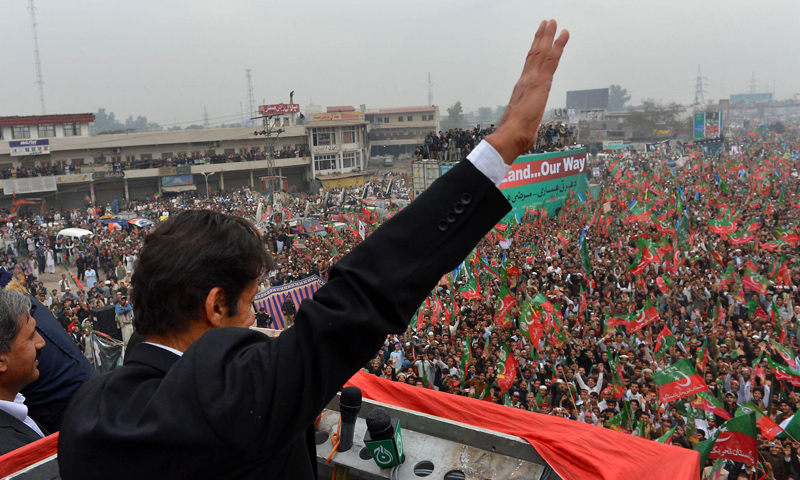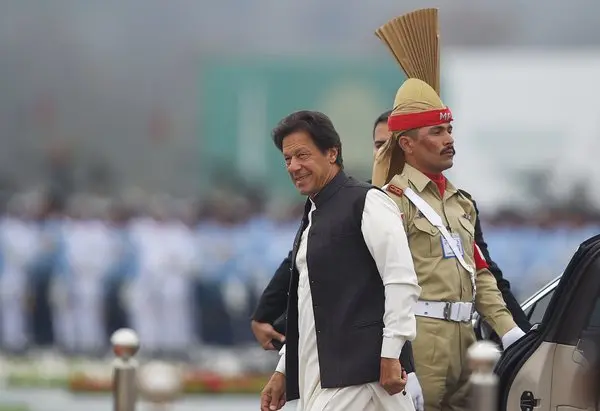Through the lens of Noam Chomsky and Edward HermanŌĆÖs Manufacturing Consent, we see how heavily mass media is manipulated to serve elite interests. Shaping the public opinion to align with powerful institutions (Chomsky & Herman, 1988). Pakistani media operates under a complex nexus of military, political and corporate influence. Looking through the communication theories, we can examine the rise and fall of Imran KhanŌĆÖs political narrative.
According to the propaganda model, media content is filtered through ownership, advertising, sourcing, flak and ideology (Chomsky & Herman, 1988). Pakistani media has switched between supporting and opposing Imran Khan depending on the prevailing power dynamics.

Dawn 
CNN

During his ascension into power in 2018, a huge portion of the media appeared to align with his establishmentŌĆÖs narrative. They portrayed him as a reformer and a champion of anti-corruption. Supported by the selective agenda-setting, the media outlets put an emphasis on his promises of economic reform and justice whilst his controversial alliances or governance challenges (McCombs & Shaw, 1972).┬Ā┬ĀThe reliance on official sources and alignment with establishment inserts ensured his image as a harbinger of change and this dominated the media.
After Imran Khan was forced out of his position in 2022, through a no-confidence vote, the narrative shifted. All the media outlets that were critical of Khan, amplified any allegations of economic mismanagement, incompetence and his confrontational stance towards the military. Illustrating the abrupt pivot of how agenda-setting operates in the service of elite interests, this highlights certain aspects of a leaderŌĆÖs record to shape public perception.

Cultivation Theory reveals how the exposure of prolonged narratives shapes the public eye. Imran KhanŌĆÖs image was built over years of media framing as a charismatic leader, being the epitome of hope. Through highlighting his promise, rallies and speeches, promising a ŌĆ£Naya (New) PakistanŌĆØ(Gerbner, 1998). After his ousting, social media amplified his narrative of being a victim of a ŌĆ£foreign conspiracyŌĆØ which resonated deeply with his supporters. This outlook fueled political polarization and protests.┬Ā
The Spiral of Silence Theory further dives into the suppression of dissenting views in Pakistan. Critics faced backlash during KhanŌĆÖs tenure, they were labeled ŌĆ£anti-stateŌĆØ or corrupt sympathizers.┬Ā┬ĀThe media polarization post-2022 intensified, with pro-Khan journalists such as Arshad Sharif facing intimidation and trolling of KhanŌĆÖs opponents. This stifled genuine debate, reinforcing the spiral of silence (Noelle-Neumann, 1974).┬Ā

The New York Times 
Britannica
Social media has become a battleground of political narratives. Platforms such as X (Twitter) allows KhanŌĆÖs PTI to engage supporters directly and promote their reform message and accountability. However, Technological Determinism reveals how these platforms amplify biases through algorithms, polarizing content (McLuhan, 1964). KhanŌĆÖs claims of a U.S.-backed conspiracy gained traction online, despite the scant evidence. Displaying the propaganda modelŌĆÖs economic and ideological filters.
The flak filter of the propaganda model is noticeable in PakistanŌĆÖs media landscape. After KhanŌĆÖs removal, pro-government media thrived, the dynamic reversed. Pro-Khan voices were censored, and any supportive channel was suspended. The intimidation discouraged balanced reporting till this day. Ensuring media aligns with the prevailing power structures, whether it is supporting or opposing Khan.

Imran KhanŌĆÖs political journey is the perfect reflection of Manufacturing Content in PakistanŌĆÖs media. In which propaganda, cultivation theories and agenda-setting shapes narratives. Social media adds complexity to it, enabling opposition yet replicating biases. Critical media engagement is vital for pluralistic and democratic discourse.┬Ā
References:
Herman, E.S. and Chomsky, N., 2021. Manufacturing consent. In┬ĀPower and Inequality┬Ā(pp. 198-206). Routledge.
Gerbner, G., 1998. Cultivation analysis: An overview.┬ĀMass communication and society,┬Ā1(3-4), pp.175-194.
McCombs, M.E. and Shaw, D.L., 1972. The agenda-setting function of mass media.┬ĀPublic opinion quarterly,┬Ā36(2), pp.176-187.
McLuhan, M., 1994.┬ĀUnderstanding media: The extensions of man. MIT press.
Noelle-Neumann, E., 1974. The spiral of silence a theory of public opinion.┬ĀJournal of communication,┬Ā24(2), pp.43-51.

